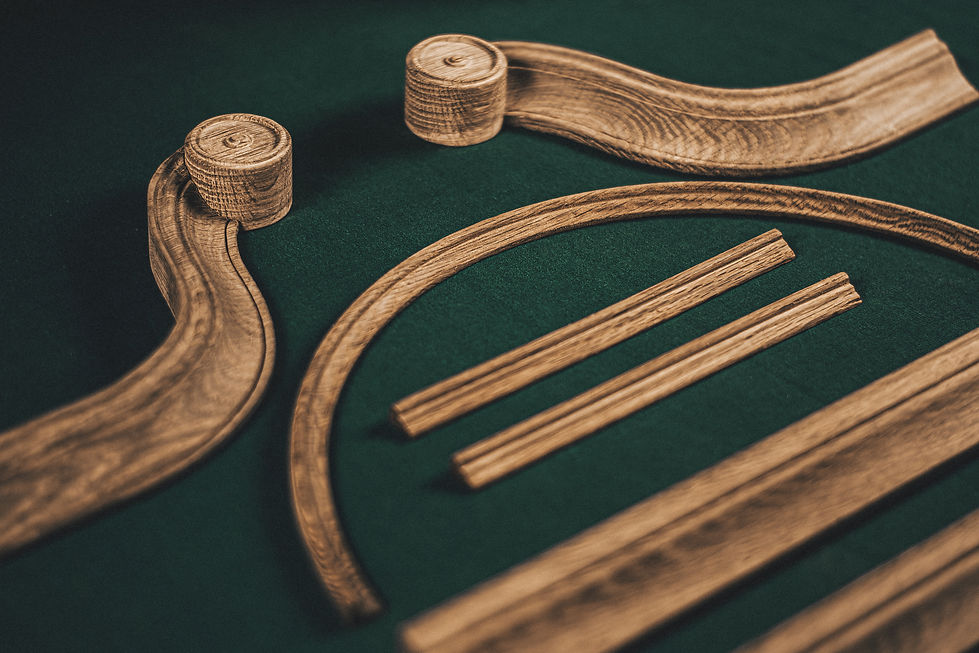- Antique Furniture Restoration -
- Antique Furniture Restoration -
- Antique Furniture Restoration -
- Antique Furniture Restoration -
- Antique Furniture Restoration -


















Clock Face & Works Restored By Mike Gould



The Clock Maker Philip Antrobus



Clock Makers Of Northern England
Brian Loomes 1997. ISBN 0 9523270 5 8
Clock Makers Of Northern England - (Pages 76 - 77)
By the beginning of the eighteenth century domestic clockmaking had begun in each of the six northern counties. During the sev- enteenth century it proves interesting to see the beginnings of the trade in various towns and villages. However, as clockmakers now became more mobile and increasingly tended to move to more promis- ing locations, it has proved awkward to continue to list them by place, especially as some clockmakers worked in two or three different loca- tions during their working lives. For this reason they are listed alpha- betically in the eighteenth and nineteenth centuries.
The pattern of domestic clockmaking had become established by 1700, with the normal household clock being the longcase in either its thirty-hour or eight-day form. Styles of dials and cases changed gradu- ally as the eighteenth century progressed, and it is possible by studying these stylistic changes to pin down a clock to an approximate decade within a clockmaker's working life. Movements changed little in princi- ple during these two centuries, except that they increasingly became more simplified as to such aspects as pillar styles.
The biggest change took place when the painted dial was introduced
about 1770. At the time of their introduction they were called white
dials, sometimes erroneously 'enamel' dials, but they were made by a
process known as japanning, whereby a hardened paint surface was fused
to a sheet of iron and hand-painted with numerals and decorative fea-
tures. By the early 1780s these dials were in use in most areas, and by
1790 their popularity was such that they had all but replaced the tradi-
tional brass dial. The clockmaker could make his own brass dials, even though some may have been unable to engrave and may have sent their dial sheets (or certain parts of them) out to specialists for the engraved work. But the new painted dials were made by specialist japanners, principally in Bir- mingham, and the clockmaker could not make these dials himself and had to buy them from the makers. The practice seems to have been for a clockmaker to hold a stock of painted dials, however small, and to have allowed the customer to select the one of his choice and then to have built the clock movement to suit the individual customer.
The first makers of japanned dials were two partners named Osborne and Wilson who worked together in Birmingham from 1772 (or a year or two earlier) until they parted company in 1777, after which time each worked alone. Osborne and Wilson were virtually the only japanned dial makers working during the eighteenth century - there were one
or two others who began then but their work is seldom met with until the nineteenth century. As the nineteenth century progressed, more and more entered this trade. A list of all known manufacturers of ja- panned dials can be found in my book Painted Dial Clocks or in the earlier White Dial Clocks - over one hundred and fifty are known! Many marked their dials on the back, or on an iron subframe (called a falseplate) which fitted between dial and movement, so that we can often identify these dials as the work of individual dialmakers.
The best quality painted dials were undoubtedly the earlier ones, those by Osborne and by Wilson being considered among the best, being seldom surpassed for quality or appeal by later ones. By the mid- nineteenth century the painted dial was often produced in cheaper form, quality being sacrificed to get the price down, and it was possible for a clockmaker to buy a dial in 1840 for about one third of the price of one of the 1780s. This cheaper type of dials can usually be judged by its appearance, especially in the quality of the artwork.
By 1870 the longcase clock had fallen from fashion among the wider public, and clockmakers were reduced to selling cheaper imported clocks from America, Germany and later France. Sometimes they still had their names lettered on the dial, but as retailers rather than true makers.
Bracket clocks always formed a very small proportion of the output of provincial makers, especially in these northern counties. They were more costly, less accurate and less reliable than longcase clocks, and tended to appeal much more to a wealthier clientele, many of whom might opt to buy this type of clock from London makers, who often excelled in them. This is why bracket clocks form a very small propor- tion of the total illustrated, or even mentioned, in the text. I doubt whether I have seen many more than a dozen Yorkshire-made bracket clocks in thirty years of dealing, and those from some counties (Cumberland and Westmorland for instance) are very much scarcer.
Clock Makers Of Northern England - (Page 80)
Philip Antrobus was born about 1690, worked in Manchester from about 1730, and died there in 1762. Two of his sons were also clock- makers. John Antrobus was working there in the 1770s. Philip Antrobus junior, believed to be the eldest son, was born about 1741, was a clockmaker and farmer, and worked there till his death in 1820. The half-dozen or so recorded Antrobus clocks seem to date from the eighteenth century, so perhaps Philip junior concentrated more on farm- ing in his later years.
